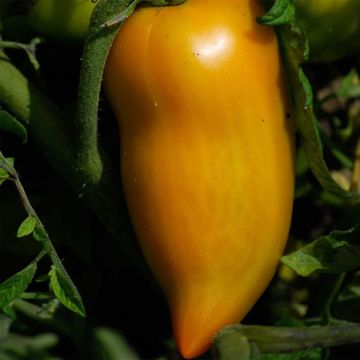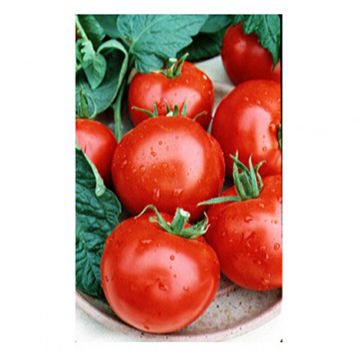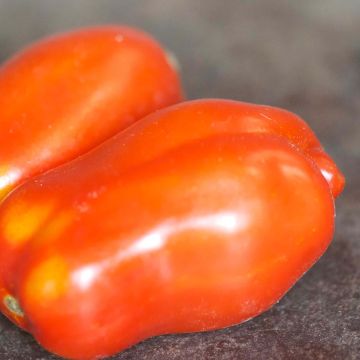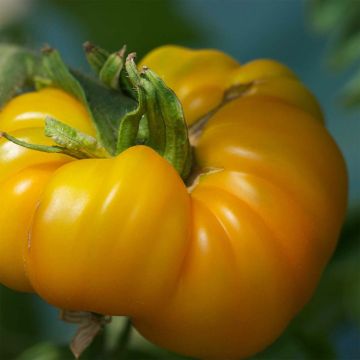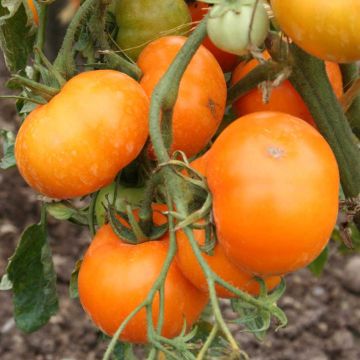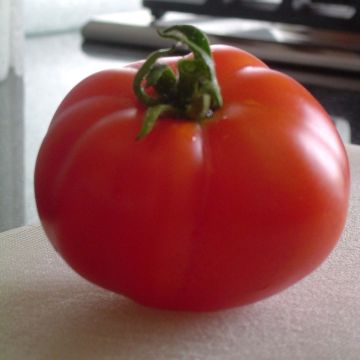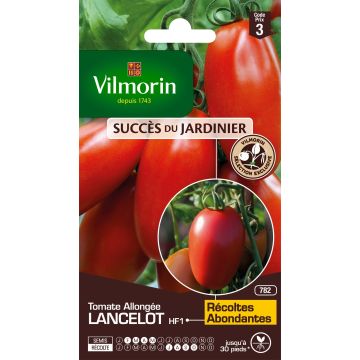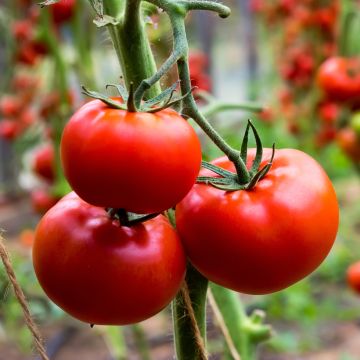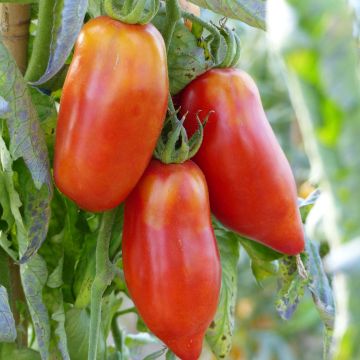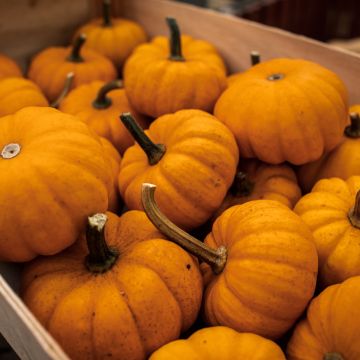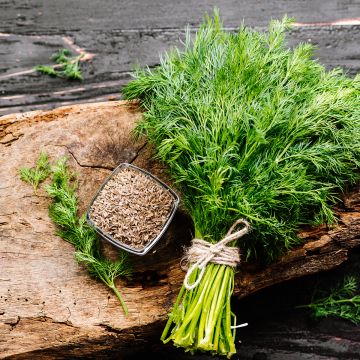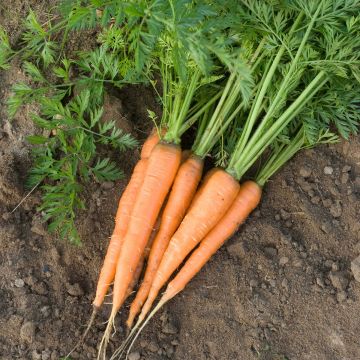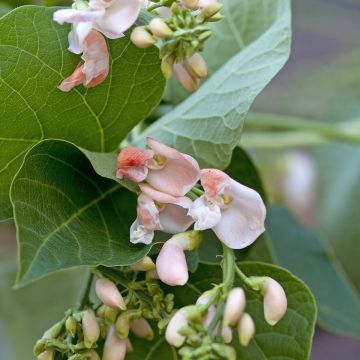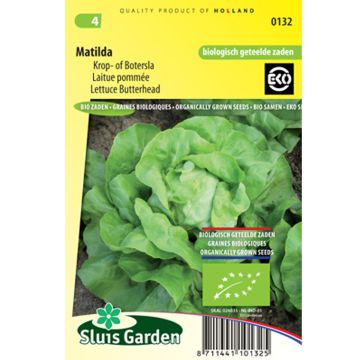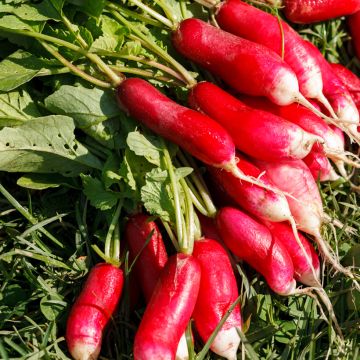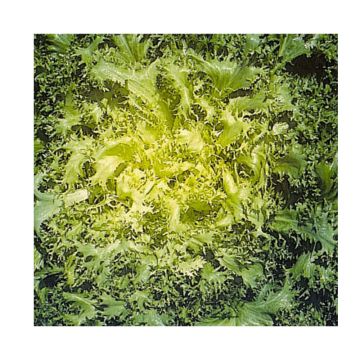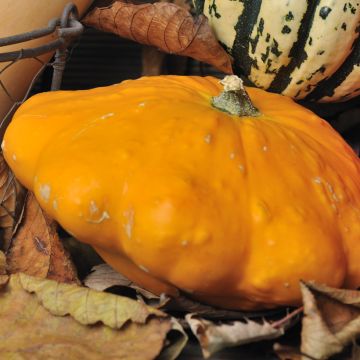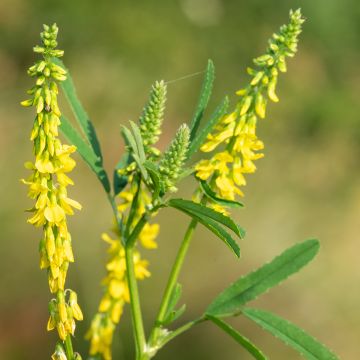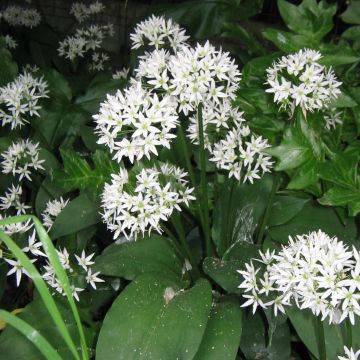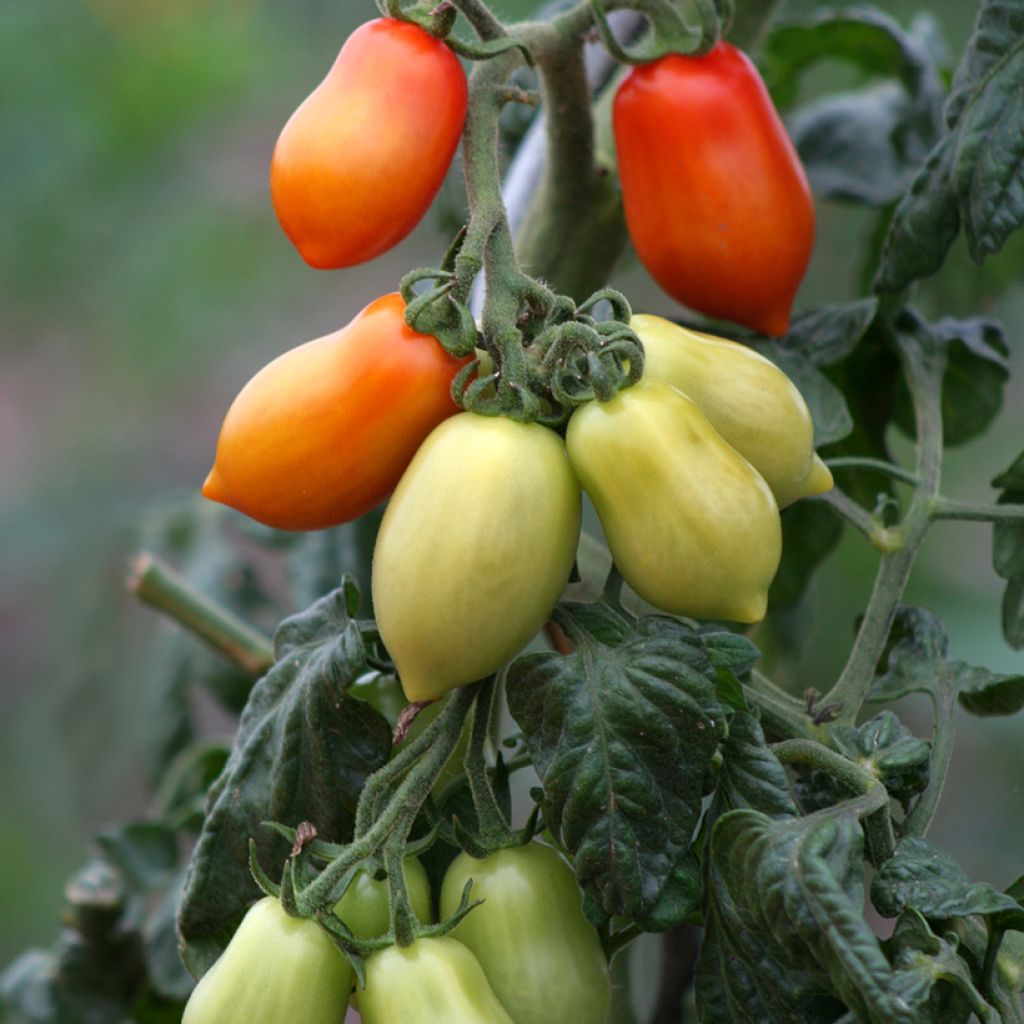

Tomato San Marzano 2 organic seeds
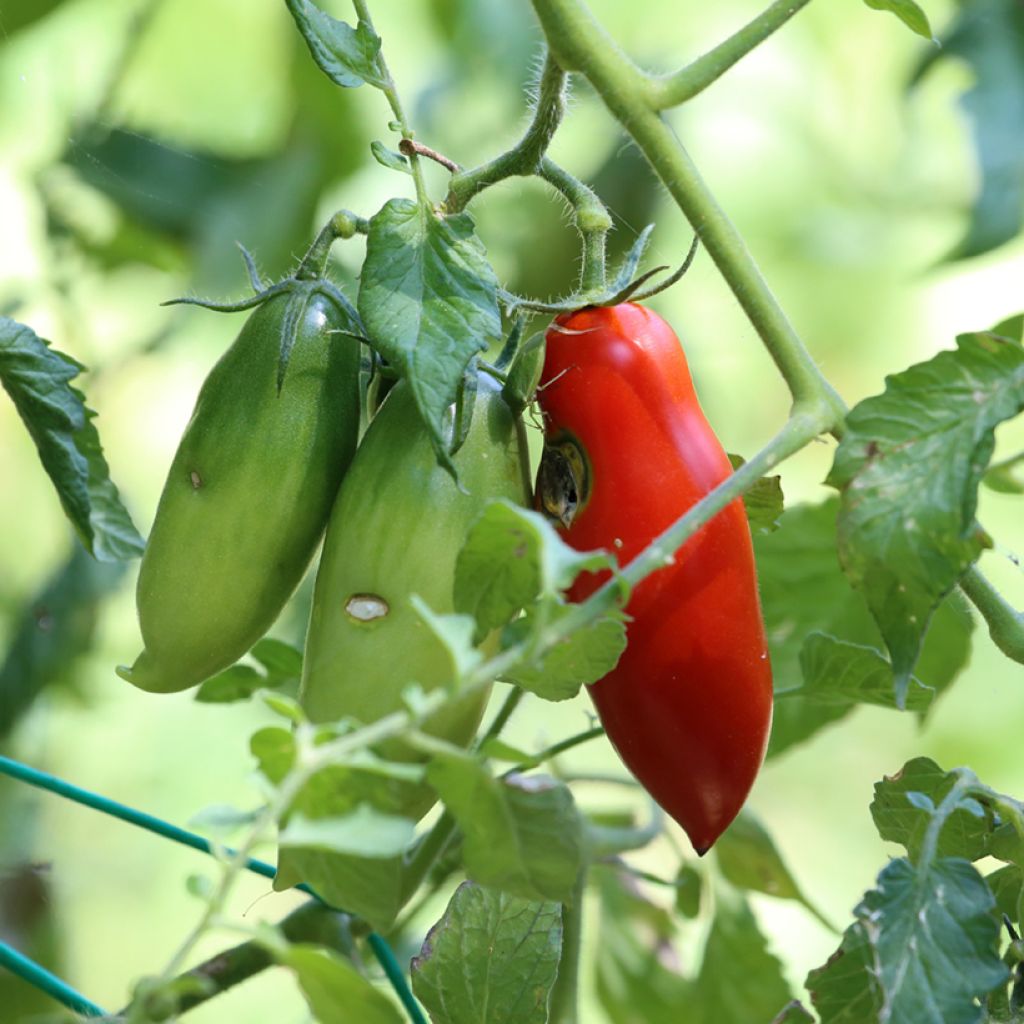

Tomato San Marzano 2 organic seeds
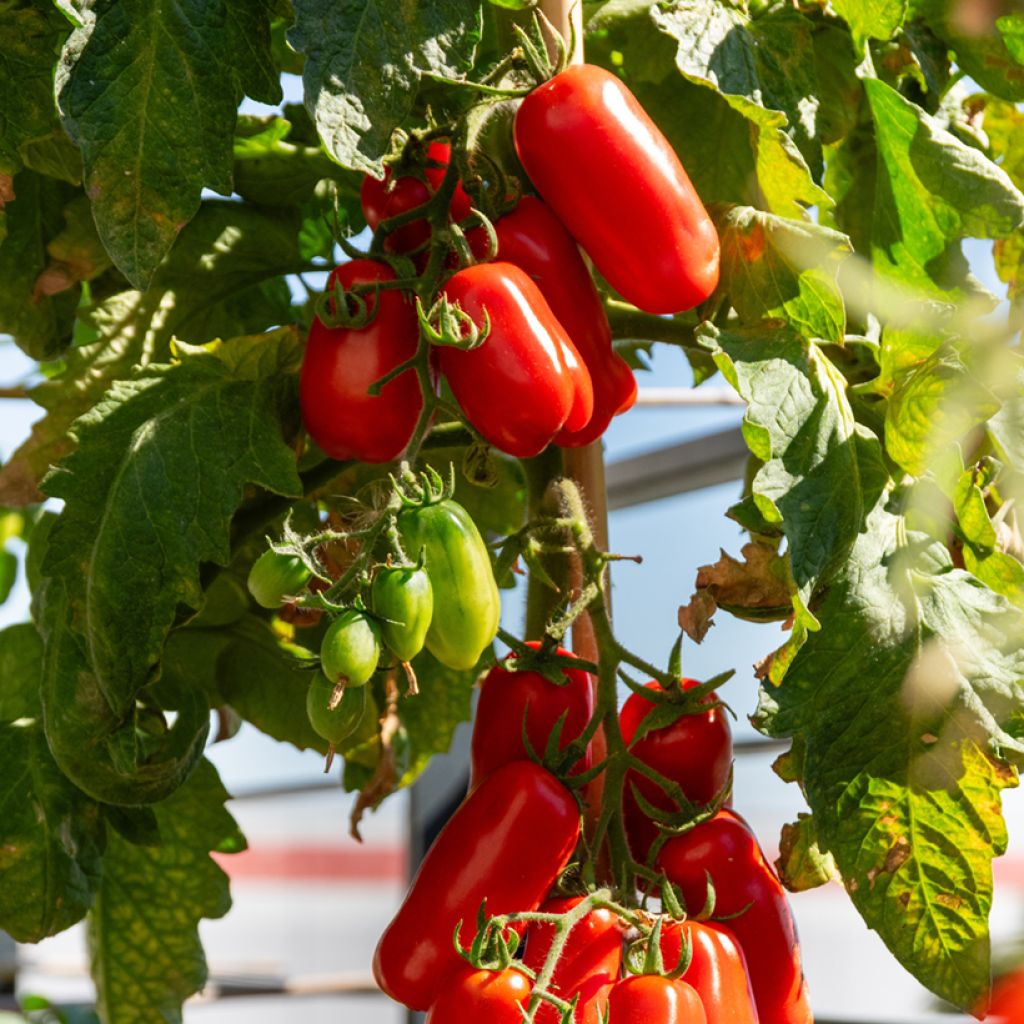

Tomato San Marzano 2 organic seeds
Tomato San Marzano 2 organic seeds
Solanum lycopersicum San Marzano 2
Tomato
This item cannot be shipped to the selected country
Delivery charge from €5.90
More information
Schedule delivery date,
and select date in basket
This plant carries a 6 months recovery warranty
More information
We guarantee the quality of our plants for a full growing cycle, and will replace at our expense any plant that fails to recover under normal climatic and planting conditions.
From €5.90 for pickup delivery and €6.90 for home delivery
Express home delivery from €8.90.
Description
The Tomato 'San Marzano 2', available here in the form of AB seeds, is an improvement on the famous 'San Marzano'. This variety stands out for its clusters of elongated and oblong red fruits, weighing between 50 and 120 g and measuring around 10 cm long. Their shape resembles that of a small pepper. Very firm and not very juicy, these fruits contain few seeds, making them perfect for cooked dishes, coulis, or sauces. Ideally used for sun-dried tomatoes, this fleshy, low-water content variety is particularly suitable for drying. Late-maturing, it is sown between March and April for a harvest extending from July to October.
The tomato 'San Marzano 2' is derived from the traditional Italian variety 'San Marzano', originating from the town of San Marzano sul Sarno, near Naples. Commercially introduced around 1926, this variety was developed to offer a higher yield while retaining the exceptional taste qualities of the original San Marzano. It is particularly prized for making sauces and preserves, notably due to its dense flesh and low seed content.
Originating from Central and South America, the tomato was already cultivated by the Incas before the arrival of the Conquistadors. This solanaceous plant is fascinating with its diversity of varieties, offering fruits of all shapes, colours (from the classic red, to yellow, green, and even blue), and sizes. Old varieties, with indeterminate growth, can live for several years, while modern varieties, with determinate growth, reach a fixed height, making staking unnecessary.
The tomato plant, a perennial herbaceous plant in the tropics, is grown as an annual in temperate climates. With its small yellow flowers in cymes that develop into colourful fruits, it brings brightness and flavour to the vegetable garden. Low in calories and rich in water, the tomato is also an important source of lycopene, an antioxidant whose bioavailability increases with cooking, as well as vitamins C and A and trace elements. However, unripe fruits, leaves, and stems contain solanine, a toxic substance to avoid.
Harvest occurs between 50 and 100 days after transplanting, depending on the varieties. A tomato is ready to be picked when it reaches its final colour and its texture, although firm, shows a slight softening. It is advisable to store tomatoes with their stalk to extend their freshness. To keep them longer, you can refrigerate them, dry them, turn them into sauces, jams, or juice, or freeze them.
A tasty tip: confit tomatoes in the oven with a bit of salt, sugar, and olive oil, then store them in an airtight jar.
To reduce the risk of "blossom end rot" due to a calcium deficiency, spray a nutrient-rich comfrey decoction on your plants. When transplanting, bury the stems up to the first leaves to stimulate root development. Finally, associate your tomatoes with complementary plants like basil, which proves to be an ally both in the garden and on the plate.
Report an error about the product description
Tomato San Marzano 2 organic seeds in pictures


Harvest
Plant habit
Foliage
Botanical data
Solanum
lycopersicum
San Marzano 2
Solanaceae
Tomato
Cultivar or hybrid
Annual
Other Tomato seeds
Planting and care
Soil preparation: Tomato plants 'San Marzano 2' are easy to grow. Sunlight and warmth play a crucial role in their success. However, they can thrive in any type of soil, although they prefer rich and well-draining soils. The substrate can be enriched with a bit of sand if it is too compact.
Indoor sowing: From mid-February to May, sow indoors or in heated greenhouses in trays at around 20°C. Bury the seeds under 5 to 7 mm of seed compost, as they need darkness to germinate. Avoid using fertiliser at this stage, as it may burn the future roots. Tomato plants grow very quickly: tomato seeds usually germinate within two weeks. Do not discard a tray if no germination has occurred during this time; some varieties are slow to sprout. When the plants reach about fifteen centimetres, consider transplanting them.
Transplanting outdoors: Once the risk of frost has passed, usually after mid-May, transplant your seedlings outdoors. Choose the sunniest and warmest spots in the garden. At the base of a south-facing wall is an ideal position. Loosen the soil, then dig a hole at least 3 to 4 times the volume of the root system of your plant. Add some well-decomposed compost at the bottom. Plant your seedling, which can be buried up to the first leaves, then backfill. Firm the soil, create a basin around the plant, then water generously. Be careful not to wet the leaves to protect your plants from fungal diseases.
Maintenance: Applying mulch around the base of your plants helps retain some moisture and reduces the need for weeding. Tomato plants do not require a lot of watering; their root system delves deep to find available resources. Water generously only in case of prolonged drought.
Seedlings
Care
Intended location
This item has not been reviewed yet - be the first to leave a review about it.
Vegetable seeds
Haven't found what you were looking for?
Hardiness is the lowest winter temperature a plant can endure without suffering serious damage or even dying. However, hardiness is affected by location (a sheltered area, such as a patio), protection (winter cover) and soil type (hardiness is improved by well-drained soil).

Photo Sharing Terms & Conditions
In order to encourage gardeners to interact and share their experiences, Promesse de fleurs offers various media enabling content to be uploaded onto its Site - in particular via the ‘Photo sharing’ module.
The User agrees to refrain from:
- Posting any content that is illegal, prejudicial, insulting, racist, inciteful to hatred, revisionist, contrary to public decency, that infringes on privacy or on the privacy rights of third parties, in particular the publicity rights of persons and goods, intellectual property rights, or the right to privacy.
- Submitting content on behalf of a third party;
- Impersonate the identity of a third party and/or publish any personal information about a third party;
In general, the User undertakes to refrain from any unethical behaviour.
All Content (in particular text, comments, files, images, photos, videos, creative works, etc.), which may be subject to property or intellectual property rights, image or other private rights, shall remain the property of the User, subject to the limited rights granted by the terms of the licence granted by Promesse de fleurs as stated below. Users are at liberty to publish or not to publish such Content on the Site, notably via the ‘Photo Sharing’ facility, and accept that this Content shall be made public and freely accessible, notably on the Internet.
Users further acknowledge, undertake to have ,and guarantee that they hold all necessary rights and permissions to publish such material on the Site, in particular with regard to the legislation in force pertaining to any privacy, property, intellectual property, image, or contractual rights, or rights of any other nature. By publishing such Content on the Site, Users acknowledge accepting full liability as publishers of the Content within the meaning of the law, and grant Promesse de fleurs, free of charge, an inclusive, worldwide licence for the said Content for the entire duration of its publication, including all reproduction, representation, up/downloading, displaying, performing, transmission, and storage rights.
Users also grant permission for their name to be linked to the Content and accept that this link may not always be made available.
By engaging in posting material, Users consent to their Content becoming automatically accessible on the Internet, in particular on other sites and/or blogs and/or web pages of the Promesse de fleurs site, including in particular social pages and the Promesse de fleurs catalogue.
Users may secure the removal of entrusted content free of charge by issuing a simple request via our contact form.
The flowering period indicated on our website applies to countries and regions located in USDA zone 8 (France, the United Kingdom, Ireland, the Netherlands, etc.)
It will vary according to where you live:
- In zones 9 to 10 (Italy, Spain, Greece, etc.), flowering will occur about 2 to 4 weeks earlier.
- In zones 6 to 7 (Germany, Poland, Slovenia, and lower mountainous regions), flowering will be delayed by 2 to 3 weeks.
- In zone 5 (Central Europe, Scandinavia), blooming will be delayed by 3 to 5 weeks.
In temperate climates, pruning of spring-flowering shrubs (forsythia, spireas, etc.) should be done just after flowering.
Pruning of summer-flowering shrubs (Indian Lilac, Perovskia, etc.) can be done in winter or spring.
In cold regions as well as with frost-sensitive plants, avoid pruning too early when severe frosts may still occur.
The planting period indicated on our website applies to countries and regions located in USDA zone 8 (France, United Kingdom, Ireland, Netherlands).
It will vary according to where you live:
- In Mediterranean zones (Marseille, Madrid, Milan, etc.), autumn and winter are the best planting periods.
- In continental zones (Strasbourg, Munich, Vienna, etc.), delay planting by 2 to 3 weeks in spring and bring it forward by 2 to 4 weeks in autumn.
- In mountainous regions (the Alps, Pyrenees, Carpathians, etc.), it is best to plant in late spring (May-June) or late summer (August-September).
The harvesting period indicated on our website applies to countries and regions in USDA zone 8 (France, England, Ireland, the Netherlands).
In colder areas (Scandinavia, Poland, Austria...) fruit and vegetable harvests are likely to be delayed by 3-4 weeks.
In warmer areas (Italy, Spain, Greece, etc.), harvesting will probably take place earlier, depending on weather conditions.
The sowing periods indicated on our website apply to countries and regions within USDA Zone 8 (France, UK, Ireland, Netherlands).
In colder areas (Scandinavia, Poland, Austria...), delay any outdoor sowing by 3-4 weeks, or sow under glass.
In warmer climes (Italy, Spain, Greece, etc.), bring outdoor sowing forward by a few weeks.

































